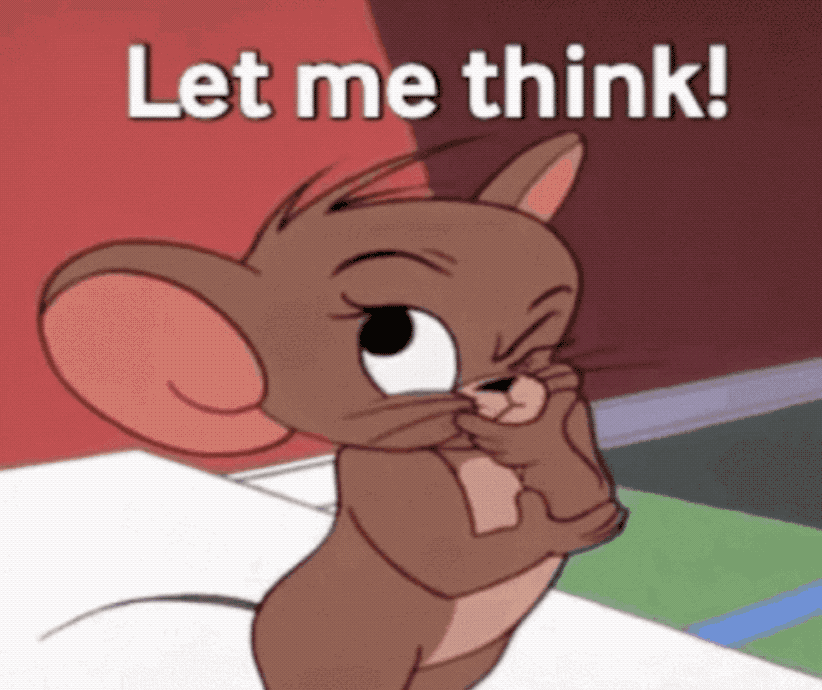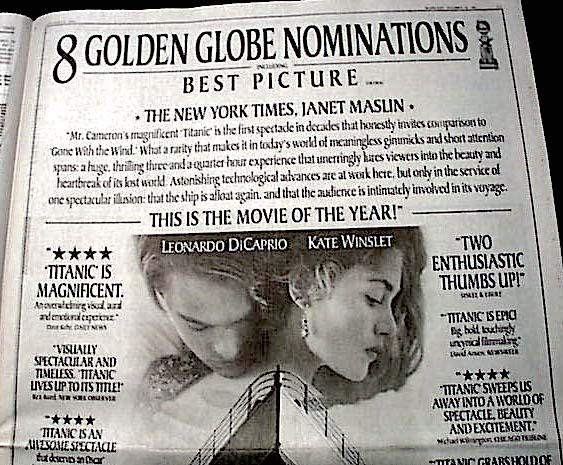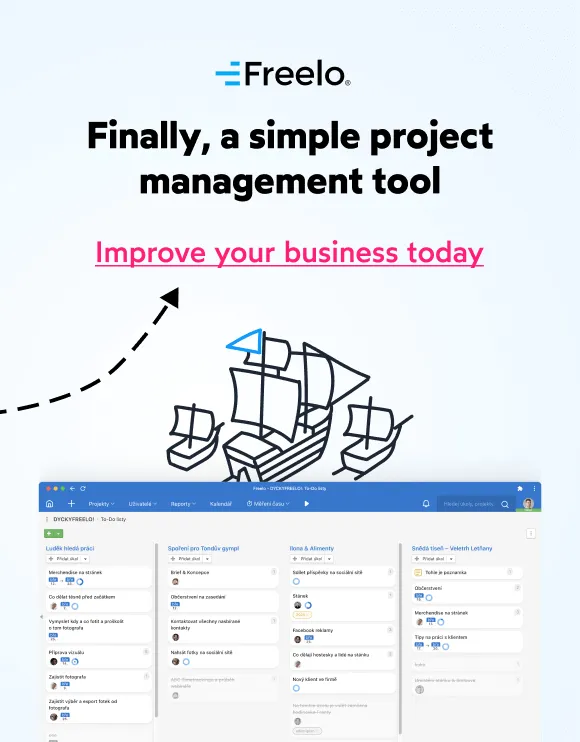
What Is the Project Management Triangle and How to Use It in Practice
 Freelo team
Freelo team

Projects don’t always go according to plan. Every project manager knows this. Furthermore, projects are never finished cheaply, well, and quickly simultaneously. Sometimes you go over the budget, other times you need to add more functions, or you do not meet the deadline. Then you need to come to a compromise and get your priorities straight. How? With the help of the Project Management Triangle! Want something done faster? Then you either need to pay extra or reel in the scope of the project.

Let us take a look at three main project parameters and methods on how to keep them in equilibrium. And see how the project management triangle was (not) used by the creators of the Titanic. 🚢
Why and How to Work with the Project Management Triangle
Every project has certain boundaries – time, scope, and resources – these determine the quality of the project. As the project manager, your job is to find a balance between them. When one part changes, it automatically affects the other two. Typically: a project gets into a time crunch, so you’ll be faced with a decision – increase the budget or cut some part of the scope. What do you choose?
I often see that the designer tries to move only one edge of the triangle and unfortunately, just as often, I see that the designer gives up after a moment of argumentation and leaves it at that. When evaluating the (un)success of the project, I then hear ‚I told you so‘. But as the project manager, I am responsible for communicating realistic triple-optimum values to the rest of the company or the customer at every point in the project.
Vratislav Cermak, personal productivity and project management consultant
The project management triangle determines the quality of the project, helps to manage the responsibilities of the project team members, but also the expectations of the clients. At the beginning of the planning process, establish with the contractor:
- Parameters TO WHEN (time), FOR HOW MUCH (resources), WHAT AND HOW (scope).
- Priorities – which of these three parameters is most important for the project and how they will be handled if changes are needed.
For example: A client wants to create a new e-shop. In order to get a specific brief, you ask him three questions (by when, for how much, what and how). But it’s likely that the requirements will change over time and you’ll have to meet him halfway. That’s why you need to know the priorities of the project:
- TIME – You want to launch the e-shop as soon as possible. Then you have to either push for resources (more money, people…) or cut the scope back (cut back on developing less important features).
- RESOURCES – You want the e-shop to be cheaper and you can’t go over budget. Then you have to give the team more time, or you sacrifice part of the result (the scope).
- SCOPE – You want the e-shop to be even more packed with features and gadgets. Then you need to extend the timeframe, or add more resources.

An illustration of how the balance works.
💡 Why is the project triangle sometimes also called the iron triangle?
No matter how powerful the project manager is, the triangle cannot be easily bent. If you move one variable, you have to work with changes to the other two.
The Three Project Limiters: Time, Scope, and Resources
To work effectively with the project triple-imperative, you need an in-depth understanding of the three parameters that determine the quality of a project: time, scope, and resources.

An illustration of the Project Management Triangle.
1. 1. SCOPE (more tasks = more time or resources)
What all do you need to do on the project and to what quality? For a better overview of the scope, use the much-loved WBS (Work Breakdown Structure). Break the work down into the smallest possible task packages. Then, of course, enter these into the project management software. In relation to the other two parameters, a direct proportionality applies – the larger the scope, the more time and money you will need.
💡 TIP: How to add more enhancements to a project without increasing the scope?👉 MVP – Minimum Viable Product. It is the simplest form of product that is usable and functional. This is how you test interest in a product that you will continue to improve through feedback. But keep in mind that even an MVP has to deliver some value – so it doesn’t have to be a perfect product, but it should be revolutionary.

2. TIME (little time = more resources or smaller scope)
You don’t just have to decide by when each task must be completed, but also how they build on each other – until you complete one, you can’t move on to the next. To get a handle on this, use the critical path method or the Gantt chart, which up to 60% of project managers rely on.

And if some tasks and processes are taking longer than they should, it’s easy to find out: Time tracking. When you start working on a task, you turn on the stopwatch in the app with one click. With summary reports, you can then see how much time you or your team spent on tasks and whether it paid off.
3. RESOURCES (few resources = less scope or more time)
They include all project costs. In addition to the financial budget, for example the number of people in the team or the necessary equipment (furniture, electronics, software).
Of course, you have to monitor the budget during the process. This is easy to do in a project management tool, for example. You set up a budget for a project or a specific To-Do list with tasks, the hourly rate of each team member and honestly track the time spent on the tasks. You can keep an eye on the ongoing spending and react flexibly. Easy, no complicated calculations. 👇
How the Project Triple-Imperative Is Changing in the Age of Agile Methods
The traditional project triple-imperative is still an important part of any successful project. But time, resources and scope are not the only parameters that determine success. What else?

Things like:
- Risks 👉 You go over budget, you don’t deliver the result on time, the material delivery is late, a team member gets sick and the work costs because of it. All of these can fundamentally affect the entire project. How to prepare for this? Perhaps with a SWOT analysis.
- Quality 👉 Do you know what expectations the client has from the quality of deliverables? Have you agreed on a quality tolerance (for example, when producing a dining table ± 1 cm)? Project managers draw up a quality management plan for these cases.
- Benefits 👉What value is the project expected to bring to the company? This too will affect the work during the project.
A significant benefit of agile management is the primary focus on benefit/benefit delivery. This is why the product owner is so heavily involved in projects, and has the ability to primarily adjust the scope to achieve the value.
Vratislav Cermak, personal productivity and project management consultant
It is therefore important to think not only about the cost of the project, but also about its value. What will it bring to society? And what does it bring to your business? Jan Rezac, consultant and web designer, sums it up:
How does working with the project triple-imperative differ for projects managed by traditional waterfall or agile methods?

How the Project Management Triangle changes with Waterfall and Agile projects.
It comes down to what parameters you can move around in your planning:
In waterfall-driven projects, there is a fixed scope at the beginning, such as building a four-story house. Time and cost adjust accordingly, and you have to make compromises along the way – go over budget, extend the schedule… There are always problems.
And so agile projects have flipped the triangle. You know when to deliver the project by when and for how much. Scope, on the other hand, is a variable that increases or decreases over time depending on the situation. You add new features and tweaks depending on how much time or resources you have left.
How the Creators of Titanic (Didn’t) Work with the Project Management Triangle
Going beyond scope, schedule and budget is what the makers of Titanic did. This approach to the project management triangle usually doesn’t pay off. ☝️ But they got lucky. From the original $110 million (and that was already an astronomical sum in 1997), the final price tag climbed to $200 million, and they finished the film half a year later. Still, it ended up being the first film in the world to gross over 2 billion dollars and win numerous awards, including several Oscars.

In Conclusion
Now you know how to work with the magic Project Management Triangle, you know all three parameters very well, so now you just need to put it into practice. It will save you time, money and certainly countless stressful moments in project management.
And if you don’t want your project to turn out like this…

… use Freelo. 😉
 Freelo team
Freelo team





